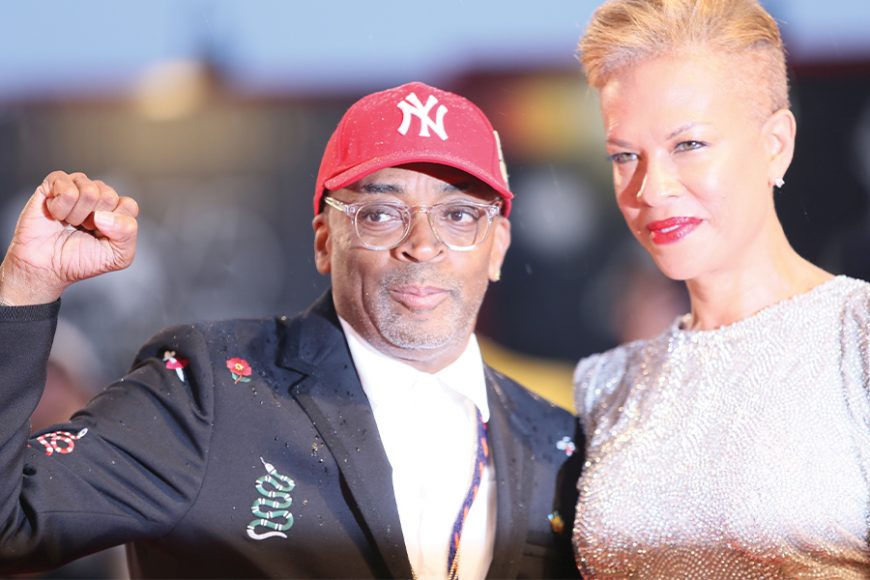Around the world, it is perhaps the quintessential fashion symbol of America and New York, even if some in America and New York wouldn’t be caught dead wearing it.
How ubiquitous is the New York Yankees cap? A few years ago, Sam Borden, global sports correspondent for ESPN, was in Pazardzhik, Bulgaria, a place so rural and remote, he wrote in a June 28 piece for the network’s website, that horse power meant horse-drawn carriages and the signs were only in Cyrillic. But there at the bus stop was a man in, yes, a Yankee cap.
“Yankees?” Borden asked hopefully. Confusion. He pointed to the interlocking “NY” on the navy hat. “USA,” the man said with a grin. “I suddenly felt at home,” Borden wrote.
Turns out he was just as at home in Tbilisi, Republic of Georgia (his cab driver wore one); Reykjavik, Iceland, (guy at the gym counter); Kazakhstan (woman selling SIM cards); and Albania (soccer stadium security guard). As for London, where the Bronx Bombers recently routed the archrival Boston Red Sox in the first Major League Baseball games played there: Fuhgeddaboutit. The hats are everywhere.
Indeed, so iconic is this cultural appropriation that the cap was one of the signature objects in “Items: Is Fashion Modern?,” a 2017-18 exhibit at The Museum of Modern Art in Manhattan featuring 111 pieces of clothing and accessories that have had a strong influence on 20th- and 21st century culture. There holding pride of place among the pearl necklace, Levi’s 501s, the Breton shirt and the LBD (little black dress) was the Yankees cap.
But why this cap and not another? A baseball cap by any other name would still cover a bald spot. For one thing, you can’t argue with success.
“Twenty-seven championships,” Mariano Rivera — legendary Yanks closer, newly inducted member of the National Baseball Hall of Fame and longtime Westchester resident — reminded Christine Flammia, who wrote about the cap’s place in history for Esquire magazine in 2017. “That’s what made the hat so iconic. And the many players that wore that uniform, that wore that iconic hat. They made it happen.”
Part of it, too, though is the classic design — that shock of white on navy (is there a crisper color combination?), the way the “Y” rests securely on the gate of the “N.”
But what brought the cap a whole new audience, experts say, was its appropriation by Oscar-winning writer-director, fashionisto and New York sports fan par excellence Spike Lee. With the Yanks resurging in 1996 after wandering in the baseball desert through much of the ’80s and early ’90s, Lee called New Era, the company that makes MLB hats, and asked for a Yankees cap — in red, with the “NY” now in navy outlined in white. It was the moment when the Yanks, always the most staid and conservative of New York sports teams, got down, so to speak, and a cultural phenomenon was born.
It’s delightfully fitting that the cap should be appropriated, because its logo is itself an early example of cultural appropriation. The interlocking “NY” was actually designed by Tiffany & Co. as an element in the Medal of Valor honoring John McDowell, a New York City Police Department officer shot in the line of duty in 1877. The original interlocking “NY” adopted by the Highlanders (the Yanks’ predecessors) in 1905 was a slightly different design, with the “N” and “Y” linking arms, as it were, side by side. That design was shelved and the Highlanders went back to their previous “N” and “Y” with a space between them. However, four years later, the team’s co-owner, former NYPD Police Chief Bill Devery, decided to bring back the interlocking letters, this time going with the Tiffany design. It has been in use ever since on Yankees caps of every color gracing the heads of everyone from LeBron James to Justin Bieber to Jay-Z.
Last year Jennifer Lopez upped the fashion ante when she performed at New York’s “NBCUniversal Upfront Presentation” in a silvery oversize Yankees cap with backup dancers from her “World of Dance” series in the more traditional hats. (The Bronx-born Jenny from the Block loves the Yanks so much, she’s marrying one, former third basemen turned baseball analyst Alex Rodriguez.)
The universality of the Yankees cap is innocuous, delicious even. What’s not to love? The world helps the team expand its brand, albeit unwittingly, while sporting a look that is both timeless and trending. It’s a win-win, unless, of course, you’re from Boston where images of New England Patriots star quarterback Tom Brady in New York City in a Yankees cap are, well, heartbreaking.
Other cultural appropriations are even more controversial. Not everyone was thrilled with the sight of crosses and saintly imagery on the likes of Dolce & Gabbana and Versace at “Heavenly Bodies: Fashion and the Catholic Imagination,” last year’s Metropolitan Museum of Art Costume Institute exhibit, even if the show located the sacred in the profane, the profane in the sacred.
Yet you wouldn’t mistake an image of a cross for anything other than a symbol of Jesus, the central figure in Western culture, even if it’s on a “Heavenly Bodies” T-shirt. There are, however, some designs that once appropriated can never return to their original meaning. An ancient spiritual symbol in the East, the swastika denoted good fortune in the West until the Nazis adopted it. Today in the West, it’s impossible to think of it as anything but a symbol of Nazism and anti-
Semitism, to such an extent that when it turns up as a small detail in a pre-1930s object on PBS’ “Antiques Roadshow,” the consternation of the appraiser and the owner is palpable.
Such is the nature of design and the tides of men. Will the Yankees cap outlive the Yanks? It already has transcended them.
We just wouldn’t wear one in Boston.





